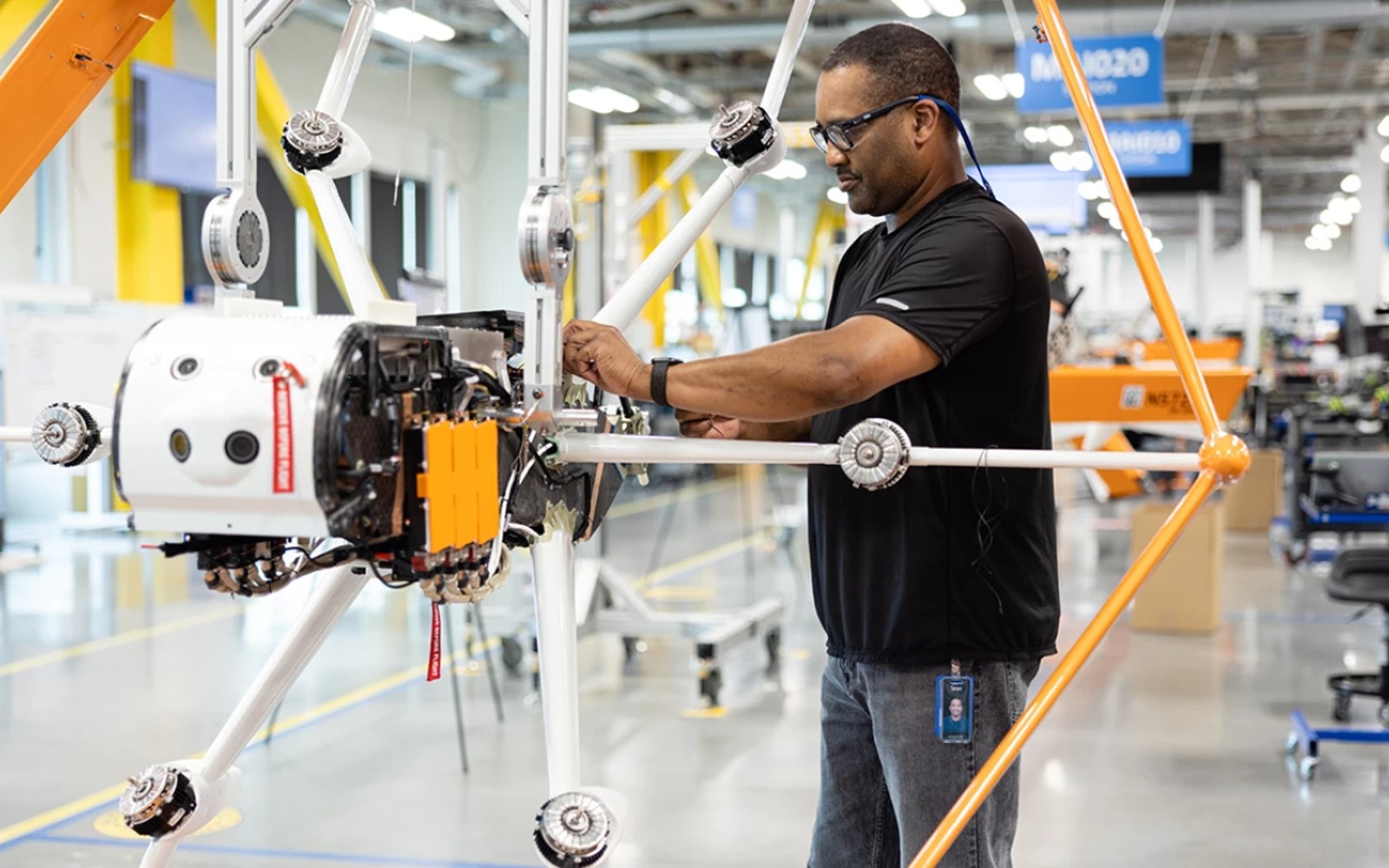
There’s a newish challenge when it comes to designing Game Boy-style handhelds capable of playing retro games, because consoles like the original Sony PlayStation and Sega Dreamcast are now considered ‘retro’ too, requiring these devices to find room for a pair of analog joysticks to accommodate 3D games. The GKD Mini Plus’ solution is to make those joysticks optional through a removable accessory, but I think the handheld is better without it.
Although the sideways, landscape-style layout of handhelds like the Nintendo Switch, the Valve Steam Deck, and the original Game Boy Advance tend to facilitate better ergonomics and larger screens, I have a soft spot for the original Game Boy’s vertical layout, with controls located beneath its screen, and tend to prefer it for retro gaming.
For the past year, I’ve mostly stuck with the surprise hit Miyoo Mini when I need to scratch a retro gaming itch, but it’s been hard to recommend, as it’s been difficult to find thanks to sporadic restockings. While I wouldn’t say the GKD Mini Plus is a better all around alternative to the Miyoo Mini, it offers excellent performance, better ergonomics for larger hands, and is actually available for purchase, which might be a bigger selling point than its removable joystick pants.
Note: A sample of the GKD Mini Plus was provided to Gizmodo by online retailer, KeepRetro.
G/O Media may get a commission

Addiction counseling
Safe Haven Health
Accessible for all
Safe Haven prioritizes your needs with flexible and individuated substance abuse treatment, specifically opioid & alcohol addiction.
A Small Innovation on a Familiar Design
Nintendo sold almost almost 119 million Game Boys, so there’s no shame in anyone copying that handheld’s now iconic design. Like most of the vertically oriented handheld emulators coming out of China, the GKD Mini Plus looks like a truncated Game Boy with the bottom third hacked off to make it even more portable and pocketable.

Although it’s bringing some new functionality to these kinds of devices, the GKD Mini Plus is inevitably going to be compared to the Miyoo Mini, and I think it actually more than holds its ground there. As much as I love how small the Miyoo Mini is, I actually prefer the generously rounded corners of the very pink GKD Mini Plus I tested (it’s also available in white and black options), which felt more comfortable in my hands and in my pocket.

The GKD Mini Plus has a larger 3.5-inch, 640×480 screen than the Miyoo Mini’s 2.8-inch, 640×480 display, and thicker bezels as well, resulting in a slightly larger handheld with more room to space out the controls. If there’s one thing I struggle with on the Miyoo Mini, it’s the controls feeling a bit too cramped for my larger hands. The larger GKD Mini Plus is far more comfortable for me, with shoulder buttons on the back that I find much easier to reach and press (I’m definitely not alone, as a larger Miyoo Mini+ is apparently enroute for 2023.)

I’ve been reviewing the handheld emulators coming out of China for a few years now, and I’ve been impressed with how their quality has improved. Some feel as good as first-party hardware from companies like Nintendo, but the GKD Mini Plus isn’t quite there yet. The plastic feels a little cheap and hollow, and some parts of the case don’t perfectly line up. It doesn’t really affect gameplay or usability, and the actual button controls and D-pad feel great, but for a handheld over $100 that’s not running Android, I expect a little more build quality these days.
Put on Your Pants, We’re Going 3D Gaming
The GKD Mini Plus’ biggest selling feature is a dock accessory that slides onto the bottom of the handheld and adds a pair of Switch-like analog joysticks to it, allowing fully 3D games with camera controls to be played on it. With consoles like the PS1, Dreamcast, PSP, and even the N64 now (more or less) supported by these devices through emulation, analog joysticks are becoming a more common feature, but squeezing them in can be a challenge.

Although the joystick accessory actually further improves the ergonomics of the GKD Mini Plus by adding a significant bump on the back that feels similar to the bulging battery compartment on the Game Boy Color, I’m not completely sold on the accessory.

I commend Game Kiddy for trying something new here, but with the dock connected, the overall vertical ergonomics of the GKD Mini Plus feel a bit weird when playing 3D games using the joysticks. Oddly enough, the dock makes the GKD Mini Plus feel fantastic when gaming using just the D-pad and buttons, but for devices like this, portability is always my priority, and I’d rather sacrifice the ability to play 3D retro games to keep the GKD Mini Plus small and pocketable.

I also want to point out that while passthrough connections allow you to charge the GKD Mini Plus and connect headphones with the dock attached, the accessory actually ends up blocking the handheld’s speakers, with a noticeable reduction in audio clarity. Given the size of the accessory, I would like to have seen even larger speakers included in the dock for a boost in sound quality when connected, not a loss.
A Bonus For Tate Mode Fans
To the left of the GKD Mini Plus’ screen is a pair of buttons I originally thought were dedicated controls for screen brightness (you’ll find a volume rocker on the other side), but their labels originally confused me.

It turns out, they’re an extra set of action buttons, allowing the GKD Mini Plus to be turned and played sideways for Tate Mode titles, where the gameplay benefits from a display that’s taller than it is wide.

It’s added functionality we’re starting to see included on other handhelds, too, including the Evercade EXP, and while the execution here isn’t exactly perfect—holding the GKD Mini Plus like this is a little awkward—for some retro gaming devotees, it’s probably better than nothing if it means they can enjoy titles like 1942 in their proper aspect ratio. But I wouldn’t choose this handheld as my primary Tate Mode device.
Software Speedbumps But Solid Performance
One of the longtime downsides of these handheld emulators coming out of China has been the challenges of using their software, which is often far from user-friendly. There’s a light at the end of the tunnel here, as many of these devices are finally starting to use Android for their operating system, which provides a UI that’s more familiar to navigate, but the GKD Mini Plus does not.

When you power up the system, you’re automatically taken to a proprietary front-end called Lovely Child, which is useable and even offers different themes, but the default layout can feel a little intimidating as the OS isn’t completely translated to English and looks a little rough around the edges. Thankfully, the GKD Mini Plus can alternately be booted into the more polished Emulation Station frontend by holding down the A button while the device powers up.
I would love for the GKD Mini Plus to boot into Emulation Station by default, but I haven’t found a way to do that just yet.
Powered by a 1.8GHz, 4-core RK3566 processor, which we’ve seen used in many other handhelds before, the GKD Mini Plus doesn’t break much new ground when it comes to emulation performance. Everything up through the original Sony PlayStation plays great on the handheld, and hitting a pair of small buttons immediately kicks you into the RetroArch settings menu if you need to make any tweaks for improving performance or even modifying the controls.
Most Sega Dreamcast games and N64 titles play decently, although you’ll definitely want to take advantage of frame skipping options to keep the gameplay smooth and manageable. And while many PSP titles are playable, if that system’s library is a high priority for you, the GKD Mini Plus should not be your first hardware choice.

As is par for the course for many of these handheld emulators, there are some bugs and quirks you’ll need to tiptoe around until official software updates are released that hopefully address these issues. When loading games for some classic handhelds like the Game Boy, Game Boy Color, and Sega Game Gear, they’re presented with an overlay to help fill the empty parts of the screen. You can quickly hop into the RetroArch menus to disable the overlay, but there’s no way to do that permanently, or make that you default preference. So every time you load a new game, you’ll have to go in and manually disable the overlays again and again.
The bugs are even worse. Nintendo DS games will load for a few seconds before completely crashing out, so I wasn’t able to test the GKD Mini Plus’ performance for dual screen titles at all. Will it be fixed later on? I certainly hope so, but support for devices like this rarely come close to what you’ll get from companies like Nintendo.
A Note on Emulation: Unlike the consoles from Nintendo, Sega, Sony, and Microsoft that run software from cartridges, discs, or by downloading it from official online game stores, retro handhelds like this rely on ROM files played through software emulation. A certain level of technical competency is required to get ROM files onto a retro handheld, and to configure the emulators for optimal gameplay performance. Using ROM files to play games instead of their original distribution media is also a legal gray area. Although emulation software and frontends such as RetroArch have not faced any major legal challenges to their development, companies like Nintendo have used legal means to shut down websites providing ROM files for download.
Is the GKD Mini Plus Your Next Handheld?
Overall, I walked away surprisingly impressed with the GKD Mini Plus, but not because of the joystick dock accessory. If the device were running a more powerful processor and offered better support for playing Dreamcast, N64, and even PSP titles, I could see myself recommending the $13 splurge for the dock.

If playing PS1 games is the main reason you’d want to grab this device, the dock accessory is certainly a must-have, but I’d recommend splurging on the $180 GKD Plus Classic instead. It’s a larger variation of this handheld with a nicer metal body and a pair of permanent analog joysticks built right in.
To me, the GKD Mini Plus is another very solid retro handheld that’s best suited for the 16-bit era of gaming and earlier, making the dock accessory unnecessary. It’s larger and more comfortable to play than the Miyoo Mini, and I’d recommend it as an alternative if you’re struggling to find that handheld in stock anywhere. Where it still lags behind the Miyoo Mini is software support. It’s a little buggy, and lacks the third-party OS alternatives that have come out over the past year from the Miyoo community, like the very polished and streamlined OnionOS. Will the GKD Mini Plus make enough of a splash to inspire its own community of developers? That remains to be seen.
#Handheld #Put #Joystick #Pants #Games






